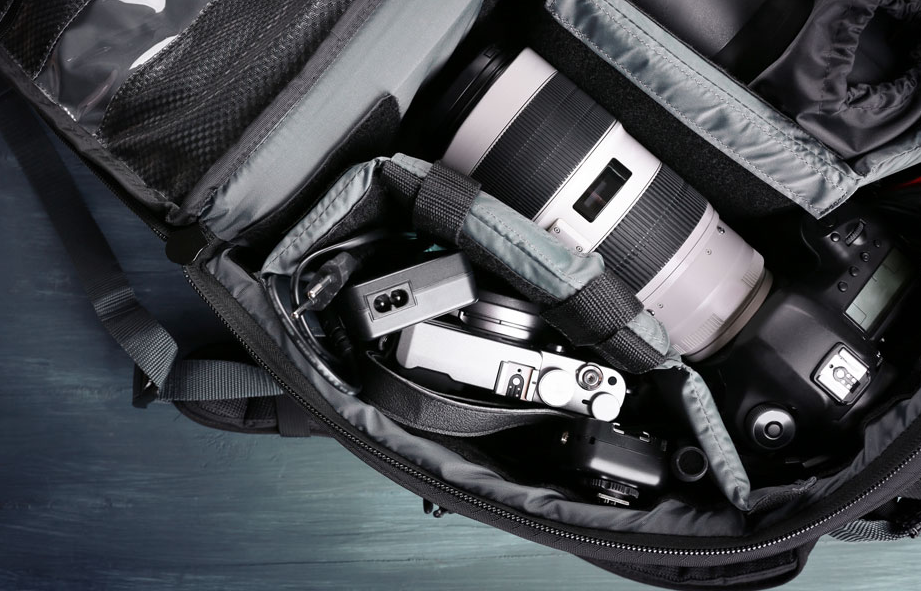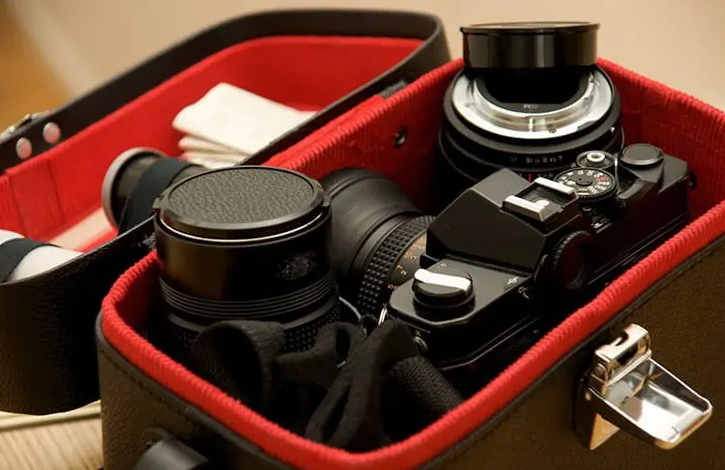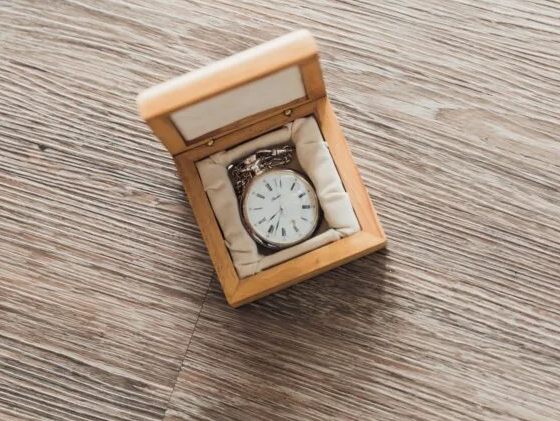Camera cases are made of materials like leather, nylon, polycarbonate, silicone, and specialized waterproof fabrics.
Table of Contents
Introduction
Brief overview of camera cases
Camera cases have evolved tremendously since the inception of photography. They play a pivotal role in ensuring that photographers, whether hobbyists or professionals, have the means to safely transport and store their prized equipment. These cases range from compact pouches designed for point-and-shoot cameras to more robust backpacks that can carry an entire photographer’s gear, including multiple lenses, flash units, and other accessories.
Originally, camera cases might have been simple leather pouches, but with the advancement in camera technology and the demand for diverse protective solutions, they now come in various designs, materials, and sizes. For example, many modern camera bags not only protect against physical damage but also offer waterproofing or insulation against extreme temperatures.

Importance of protecting cameras
Cameras, especially high-end DSLRs and mirrorless models, can be significant investments. Depending on the model and the specifications, some cameras can cost upwards of $5,000. Beyond the initial cost, there’s an intrinsic value in the memories they capture and the artwork they facilitate.
Moreover, it’s not just the camera body that needs protection. Lenses, which can sometimes be even more valuable than the camera body itself, with some professional lenses costing up to $10,000, also require diligent care. Damage to a lens, such as scratches, can directly affect image quality.
Additionally, the speed at which photographers often need to operate means they’re regularly swapping out lenses, adjusting settings, or moving between locations. All these activities increase the risk of accidental drops or bumps. Without a proper protective case, the lifespan of a camera and its accessories can be severely compromised.
Historical Materials Used
Early camera case materials
In the initial days of photography, cameras were delicate, cumbersome, and often required careful handling. The first cameras, like the Daguerreotype, were heavy and constructed with materials like wood and brass. As a result, their cases were also sturdy and typically handcrafted. Leather was a predominant material used, favored for its durability and ability to offer a decent level of protection from minor impacts. The interiors of these cases were often lined with velvet or silk, providing a cushioned nest for the camera and reducing the risk of scratches. Depending on the quality and type of leather, the cost of these early camera cases could range from a few dollars to over a hundred.
Additionally, wooden boxes with metal clasps were also popular, especially for larger camera setups. These boxes were custom-fit for specific camera models and offered maximum protection. The downside, however, was their weight. Carrying a wooden box, even without the camera inside, could be quite a chore, especially for photographers who traveled or moved frequently between shoot locations.
Evolution of materials over time
As camera technology progressed and models became lighter and more compact, the need for more adaptable and lightweight protection grew. By the mid-20th century, synthetic materials like nylon began to make their appearance in the world of camera cases. These new materials brought about several advantages. Not only were they lighter and more cost-effective (often priced 50% less than premium leather cases), but they were also resistant to water, a quality leather lacked.
The 1970s and 1980s saw the advent of polyester and other plastics in the manufacturing of camera cases. These materials were not only robust but could also be molded into specific shapes, allowing for cases that fit cameras like a glove. Their lightweight nature and the relative ease of mass production meant that they quickly became popular among the masses.
Common Materials
Leather and faux leather
Leather has been a long-standing choice for camera case materials due to its durability and aesthetic appeal. Genuine leather cases, crafted from animal hides, are often associated with luxury and can command higher prices, sometimes ranging between $50 to over $300, depending on the craftsmanship and brand. A notable advantage of leather is its ability to age gracefully, developing a patina over time, which many photographers appreciate for its vintage look.
While genuine leather holds a certain charm, faux leather or synthetic leather provides an alternative for those concerned with animal welfare or looking for a more budget-friendly option. Faux leather cases can be priced significantly lower, often starting from as low as $10. Furthermore, they come in a variety of textures and colors, allowing for more customization options. The downside, however, might be in longevity, as faux leather tends to wear out faster than its genuine counterpart.
Nylon and polyester
Nylon and polyester are synthetic fibers widely recognized for their durability and resistance to environmental factors. These materials are particularly popular in modern camera backpacks and sling bags. Due to their lightweight nature and versatility in design, they are a preferred choice for many photographers on the go.
Nylon cases are known for their strength and can resist tears, which makes them ideal for rugged use. They also tend to be water-resistant, an added advantage for outdoor photographers. In terms of cost, nylon camera bags can range from $20 to upwards of $200, depending on the brand and design.
Polyester, on the other hand, boasts of color retention, ensuring that the case maintains its look for a longer time. It’s also typically more affordable than nylon, with prices for polyester camera cases starting at around $15.
Hard plastic and polycarbonate
When it comes to maximum protection, especially for photographers who frequently travel or are in extreme environments, hard plastic and polycarbonate cases become the go-to options. These materials are designed to withstand significant impacts, safeguarding the camera gear inside.
Polycarbonate, a type of thermoplastic polymer, is especially noteworthy for its high resistance to impact and its lightweight properties. It’s commonly used in cases meant for air travel or adventure photography. These cases can vary widely in price, ranging from $50 for smaller cases to over $500 for large travel cases with specialized compartments.
Silicone and rubber
Silicone and rubber are primarily used in camera skins and protective wraps. They provide a snug fit around the camera, protecting it from minor bumps and scratches. While not as robust as hard cases, silicone and rubber wraps offer a balance of protection without adding much bulk, making them ideal for casual photographers or those looking to maintain a low profile.
Silicone wraps are soft to touch and can also enhance the grip on the camera. They come in a range of colors and are generally affordable, with prices starting as low as $5. Rubber, being slightly more rigid, offers better shock absorption and might be priced slightly higher, starting at around $10.
Specialized Materials
Waterproof materials
In photography, the unpredictability of the elements can sometimes make or break a shot. Especially for outdoor and nature photographers, ensuring gear remains dry becomes paramount. This is where waterproof materials come into play.
Tarpaulin, or tarp, is a heavy-duty waterproof cloth traditionally made from canvas or polyester coated with urethane. Camera bags crafted from this material can keep gear dry even in heavy rain, making them a favorite for photographers who venture into wet environments. Bags made from high-quality tarpaulin can cost anywhere from $100 to $400, depending on size and brand.
Another material often used for waterproofing is Gore-Tex, a breathable fabric that can repel liquid water while allowing water vapor to pass through. Its unique property ensures that the camera gear remains dry from both external rain and internal condensation. Camera covers and rain sleeves made from Gore-Tex usually range from $20 to $100.
Shock-absorbent materials
Protecting expensive camera equipment from drops, bumps, and other forms of impact is a top priority. Shock-absorbent materials play a vital role in minimizing potential damage from such accidents.
Memory foam, a substance originally developed by NASA, has found its way into camera bags. It molds to the shape of the camera and lenses, providing a snug fit. When the pressure is released, it slowly returns to its original shape, ensuring that the gear inside remains cushioned against shocks. Cases or inserts with memory foam can range from $30 to $200 based on the size and brand.
EVA (Ethylene Vinyl Acetate) is another popular shock-absorbent material. It’s a flexible and resilient foam that can absorb impacts effectively. It’s common to find EVA in the internal compartments of camera backpacks or as protective shells for compact cameras. Depending on its usage, products utilizing EVA can be priced between $20 to $250.
Temperature-resistant materials
Extreme temperatures, both hot and cold, can adversely affect camera equipment. Temperature-resistant materials are designed to protect gear from such harsh conditions.
For photographers working in colder environments, materials like Thinsulate are used. This thin, synthetic fiber thermal insulation layer helps in maintaining the equipment’s temperature, ensuring that batteries don’t drain quickly and the camera remains operable. Products with Thinsulate insulation can range from $40 for small pouches to $300 for larger bags.
In contrast, for those operating in hotter climates, aluminized polyester is a lifesaver. This material reflects sunlight and prevents the camera gear from overheating. Camera bags equipped with this feature usually start from $50 and can go up to $200, depending on other features and brand reputation.

Design Considerations
When crafting the perfect camera case or bag, manufacturers don’t merely choose materials haphazardly. Several crucial considerations come into play, balancing between protection, aesthetics, and practical functionality.
Factors influencing material choice
Multiple factors guide the selection of materials for camera cases:
- Intended Use: A camera bag designed for urban photography might prioritize style and compactness, while a bag intended for rugged outdoor photography would prioritize protection and durability. For instance, a travel photographer might invest in a polycarbonate hard case worth $300, while a street photographer might prefer a stylish leather sling bag costing around $150.
- Weather Conditions: Materials must cater to the anticipated weather conditions. For instance, photographers in rainy regions might gravitate towards Gore-Tex products, while desert photographers could favor aluminized polyester bags.
- User Preferences: Some photographers prioritize eco-friendliness and might opt for sustainable or cruelty-free materials, even if they come at a higher price point, sometimes 20% more than regular options.
Trade-offs between protection and weight
Weight is a crucial factor for photographers, especially those on the move. Carrying heavy gear can be tiring, so the weight of the protective case becomes a significant consideration.
- Heavy-duty Protection: Hard plastic cases offer excellent protection but can be heavy. A hard case for professional DSLRs might weigh between 5 to 10 pounds empty, which can be cumbersome for some users, especially when factoring in the weight of the camera and lenses.
- Lightweight Solutions: Materials like nylon or polyester strike a balance between protection and weight. A typical nylon backpack might weigh just around 2 to 3 pounds, making it much easier to carry for extended periods.
- Cost Implications: Often, lightweight materials that offer robust protection can be more expensive. A lightweight, high-protection bag can sometimes cost upwards of $400, while heavier alternatives of the same protection level might be available for $250.
Aesthetics vs functionality
The design of a camera case isn’t solely about protection; it’s also about style and personal expression.
- Fashion-forward Choices: Leather and faux leather bags often lean towards aesthetics, offering photographers a chic and classic look. These stylish bags might come at a premium, with top brands sometimes pricing them at $500 or more.
- Functional Designs: On the other hand, bags made of nylon or polyester might not win fashion awards but are incredibly functional, with multiple compartments, pockets, and easy-access zippers. They’re typically more affordable, with many functional options available under $100.






